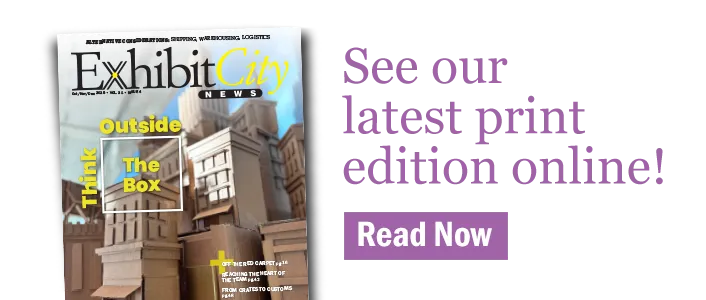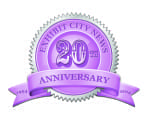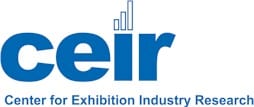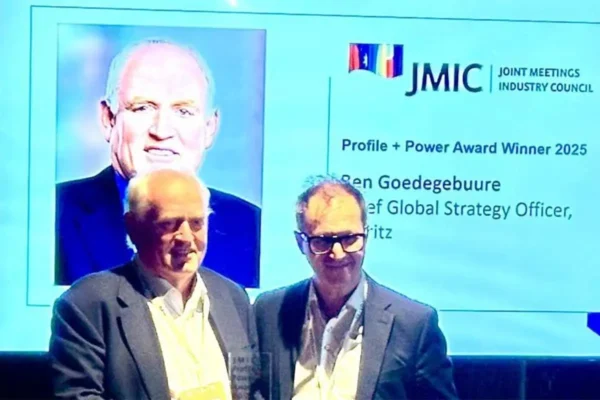Prevalent in the exhibitions industry is the usage of acronyms. They identify constantly evolving organizations that are much different than when they first started.
The myriad of acronyms that have swept the pages of Exhibit City News over the past 20 years probably overwhelmed newcomers. Many of them may have caused even the most experienced professionals to puzzle over their meanings.
Luckily, there are a few mainstay organizations that are so integral to every aspect of the industry that it’s impossible to not know who they are or who they represent. Just like the people who are deeply entrenched in this industry, so too are these and more organizations.
Each time the International Association of Exhibitions and Events (IAEE) changed its name it reflected the globalization and evolution of the industry and the people who fueled it, according to Susan Brower, CMM, CCP and vice president, marketing and communications, IAEE.
The association encompasses those who plan, manage and organize exhibitions, and others who provide services to the organizers, facilities, transportation, technology, education, production and more.
“As a member-based organization, it is imperative to listen to members and balance trends and data about the industry,” said Brower. “Every year, there are changes to improve service and opportunities for members that have all been based on member feedback and data.”
Starting in June 1928 with 10 members, the organization became the National Association of Exhibit Managers (NAEM) after exhibition organizers met in Cleveland, Ohio, to share information about the exhibitions and events industry.
In 1991, it became International Association of Exposition Management (IAEM), but this was later changed to International Association of Exhibition Management (IAEM) in 2000 to reflect the international usage of exhibition rather than exposition.
During this time, the association transitioned from a society of mostly American exhibition managers to a trade association representing the international exhibition industry. Its headquarters relocated to Dallas, Texas, and a larger staff was hired to serve the needs of members around the world.
Positioning itself as a primary education provider to the global exhibition industry, IAEE created a three-year exhibition management degree program in 1985. Its CEM (Certified Exhibition Manager) program is now available online to professionals in many countries.
Under its current handle, IAEE, which came about in 2006, the association has more than 8,300 members.
To reflect its purpose as an independent research agency for the exhibition industry, the Trade Show Bureau (TSB) was renamed Center for Exhibition Industry Research (CEIR) in 1993.
When TSB started in 1978 to promote the exhibition industry, similarly to how the Radio and TV Bureau and Newspaper Bureau promoted the use of those media, the organization ran into a problem: There was no research available to prove organizers’ claims about the value of tradeshows.
“Before we could promote, we needed evidence and facts. Research became the first priority,” said Douglas L. Ducate, former president and CEO, CEIR. “The question was whether to charge for the research reports or give them away. Much of the CEIR work is seen by the industry as an entitlement program, much like unemployment numbers. We are another helpful data set.”
The organization has an operating agreement with IAEE, which provides general and administrative (G&A) support in exchange for CEIR materials being distributed as part of the IAEE dues to its members.
“In the beginning, it was all about support and membership. TSB/CEIR was not a primary association for anyone. Each part of our industry – organizers, contractors, destinations, facilities and exhibiting companies – had their own associations,” Ducate explained. “When things got tough, as they did in 2001 and 2002, the CEIR membership was the first to go. On two occasions, it was out of money, and companies came to the rescue, and like the Phoenix, it rose from the ashes. The work of CEIR is highly praised. Monetizing that work has been the challenge.”
At CEIR’s peak, it had 1,500 companies as members. Due to its operating agreement with IAEE, CEIR can also claim its 8,000-plus members.
As an advocate for exhibitors, Jim Wurm managed the Exhibitor Appointed Contractors Association (EACA) since 1998.
He became the one to contact when Trade Show Exhibitors’ Association (TSEA), which promoted development of the tradeshow industry and exhibit and event marketing experts, faced financial difficulties.
Under the guidance of Executive Director Wurm, the two organizations merged in June 2012, combining their missions and members to become Exhibit & Event Marketers Association (E2MA). The association is now comprised of more than 500 member companies representing more than 17,500 full-time tradeshow professionals and over 45,000 part-time tradeshow workers.
“I was on a United Airlines flight, and they were going through a merger with Continental. The napkins they gave out said ‘Our names have changed, but our values are still the same.’ That was the perfect way to say it,” Wurm explained. “While the names of our legacy associations have changed, our values will not. Our member priorities will always be that of the new association.”
While the organization serves exhibitors and contractors, it broadened to include senior marketers who didn’t have direct connection to any organization. Information is delivered to both sets of members. This includes the Red Diamond Congress, E2MA’s annual conference for exhibitors and event managers, and the Certified Manager of Exhibits (CME) program, an association-sponsored and administered certification program recognizing professionalism in exhibit and event management and marketing.
“Change is commonly viewed as a challenge. When things are new and different, it can create temporary upsets until one has the opportunity to assess what changes mean,” said Wurm. “Technology enhanced our ability to respond to changes. Our website is unique because it works just like LinkedIn and Facebook when it comes to sharing information and posting pictures. We have gotten positive responses.”
From an administrative standpoint, there is more to do at E2MA, according to Wurm, so he expanded his staff. He hired a team to handle sponsor acquisition, manage educational programs, reach out to suppliers and he hired his daughter, Jesse, as social media manager before she moved on to other opportunities.
IFES
While the International Federation of Exhibition and Event Services (IFES) didn’t go through any name changes, its membership-selection process did.
Beginning in 1984 as a federation that held 12 national associations — six of which were founding members from France, Austria, Netherlands, Germany, UK and Italy — IFES was limited to organization-organization interaction.
“In 2009, IFES opened to individual membership and established a membership selection processes to provide a quality filter and look to bring together leading stand builders and suppliers in each market and not any company operating in the sector as a directory would,” explained Gloria Guevara, executive director, IFES.
As IFES moved from a membership of 12 to 189 in 36 different countries with different languages and customs, it became an international federation of associations and individual companies active in the design, conception, production and show services for temporary structures used at tradeshows.
The organization seeks to bring attention to the contributions the exhibition sector makes to the economy and professionalize the industry to move toward international standards.
“The exhibition industry had to expand and diversify significantly in the past five to 10 years. This is especially true in Europe and long-established markets like the U.S. The economic situation has propelled changes in small-to-medium enterprises, our current core membership, in order for them to survive the economic climate,” said Guevara. “For established markets, going international was compulsory. This is where our restructuring in 2009 was, in part, in response to individual companies looking for more business-to-business exchanges across the globe.”
IFES is run by its members, and they are full voters in its general assembly.
Other organizations
Although this article only focuses on a few of the major organizations in the tradeshow industry, there are just many other influential ones that proved their staying power.
This includes Exhibit Designers and Producers Association (EDPA); UFI – the global association of the exhibitions industry, which originally stood for “Union des Foires Internationales” (Union of International Fairs); Society of Independent Show Organizers (SISO); the International Association of Convention Centers (AIPC); Meeting Professionals International (MPI) – and the list could go on.



























